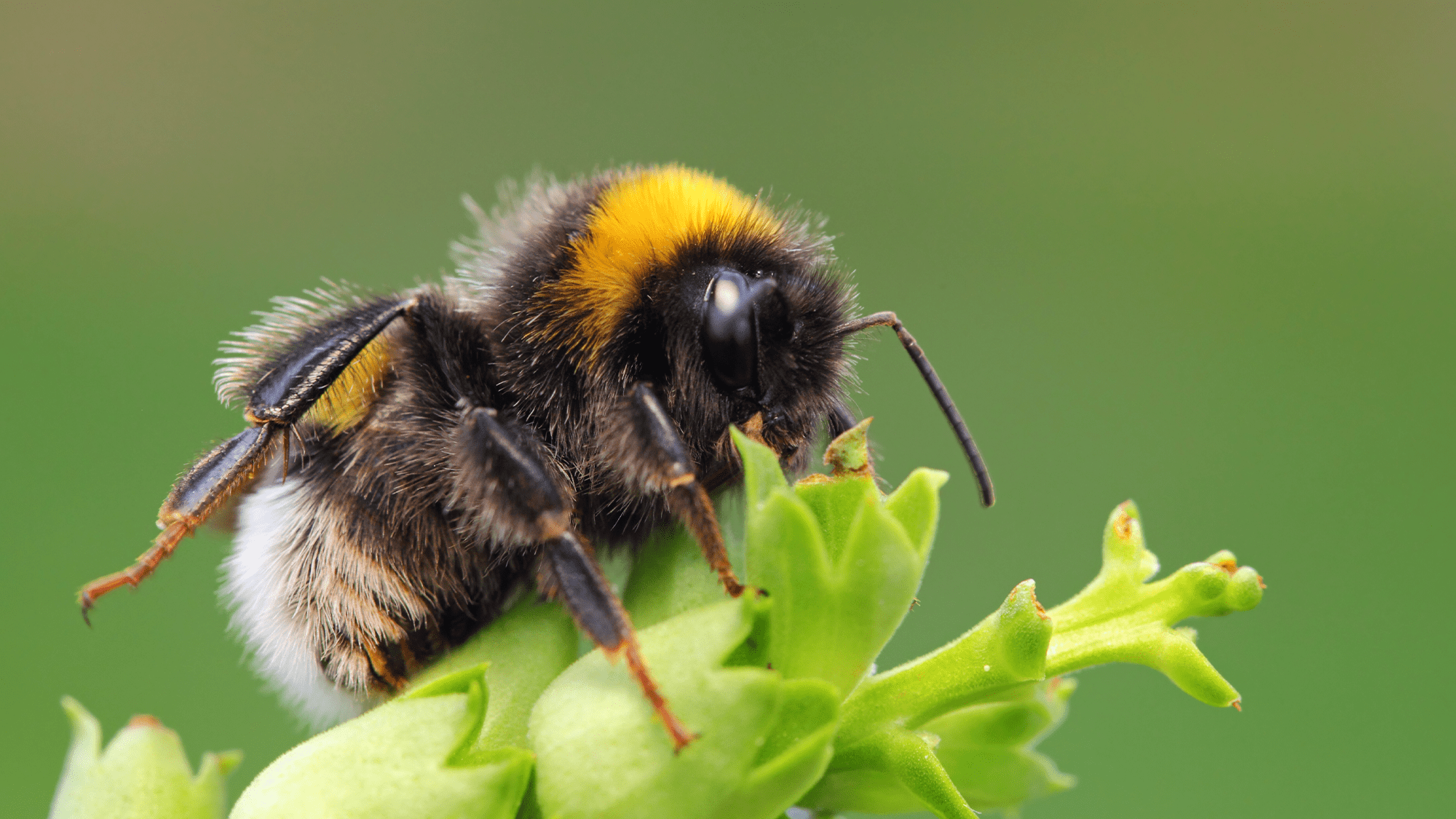

When foraging, bumblebees often have a choice to make. Do they go for the nectar that is the easiest to get, or should they work harder to get nectar with a higher sugar content? A new study found that the priority for the bumblebees is getting the most calories in the shortest amount of time, even at the expense of using up more energy. This trade-off ensures an immediate energy boost for the bumblebee colony, according to a study published October 24 in the journal iScience.
[Related: Female honeybees may pass down ‘altruistic’ genes.]
The study looked at a common species in the United Kingdom called Bombus terrestris or the buff-tailed bumblebee. Bumblebees will drink nectar from flowers and regurgitate it into their nest for other bees to use. They only store a small amount of nectar in their nests, so they must make the most of every opportunity to forage.
To make these choices, bumblebees appear to trade off the time that they spend collecting nectar with the energy content of that nectar. If the sugar content is worth it, the bees will work to collect it despite being more difficult to access. By comparison, honeybees make their foraging decisions by optimizing the amount of energy they are expelling for any nectar, likely to prolong a honeybee’s working life.

“Bumblebees can make decisions ‘on the fly’ about which nectar sources are the most energetically economical,” study co-author and University of Oxford bee biologist Jonathan Pattrick said in a statement. “By training bumblebees to visit artificial slippery flowers and using different ‘nectars’ with high, medium or low amounts of sugar, we found that they could make a trade-off between the energy content of the nectar and how difficult it was to access.”
For the study, Patrick and a team of biologists made 60,000 observations of the bumblebee’s behavior over six months. This allowed them to precisely estimate bumblebee foraging energetics and each bumblebee in the study was observed for up to eight hours a day without a break. The team used artificial flowers that were positioned vertically and horizontally and had slippery surfaces that made it difficult for the bees to grip.
A computer program measured the split-second timing as the bees flew between the fake flowers and foraged for nectar to see how much energy the bumblebees spent flying and how much they collected while drinking. They then identified how the bees decided whether to spend extra time and energy collecting high-sugar nectar from the slippery flowers, or take the easier option of collecting lower-sugar nectar from flowers they could land on.
Each bumblebee was then given one of three tests.
In test one, the nectar on both the vertical and horizontal artificial flowers contained the same amount of sugar. The bumblebees chose to forage from the horizontal flowers instead of spending the extra time and energy hovering around the vertical flowers.
In test two, the vertical flowers had much more sugary nectar than the horizontal flowers and the bumblebees chose to drink almost exclusively from the vertical flowers.
[Related: Bee brains could teach robots to make split-second decisions.]
In test three, the vertical flowers had slightly more sugary nectar than the horizontal flowers. This created a situation where the bumblebees had to make a tradeoff between the time and energy they spent foraging and the energy content in the nectar they were drinking. They ended up feeding from the horizontal flowers.
Based on these test results, the authors conclude that the bumblebees can choose to spend additional time and energy foraging from the more hard-to-access nectar sources, but only if the eventual reward is really worth it. Understanding how this works can help make predictions about what types of flowers the bumblebees are likely to visit and inform choices of the kinds of flowers planted to make fields more bumblebee friendly.
“It’s amazing that even with a brain smaller than a sesame seed, bumblebees can make such complex decisions,” study co-author and University of Cambridge biochemist Hamish Symington said in a statement. “It’s clear that bumblebee foraging isn’t based on a simple idea that ‘the more sugar there is in nectar, the better’ – it’s much more subtle than that. And it highlights that there’s still so much to learn about insect behavior.”
